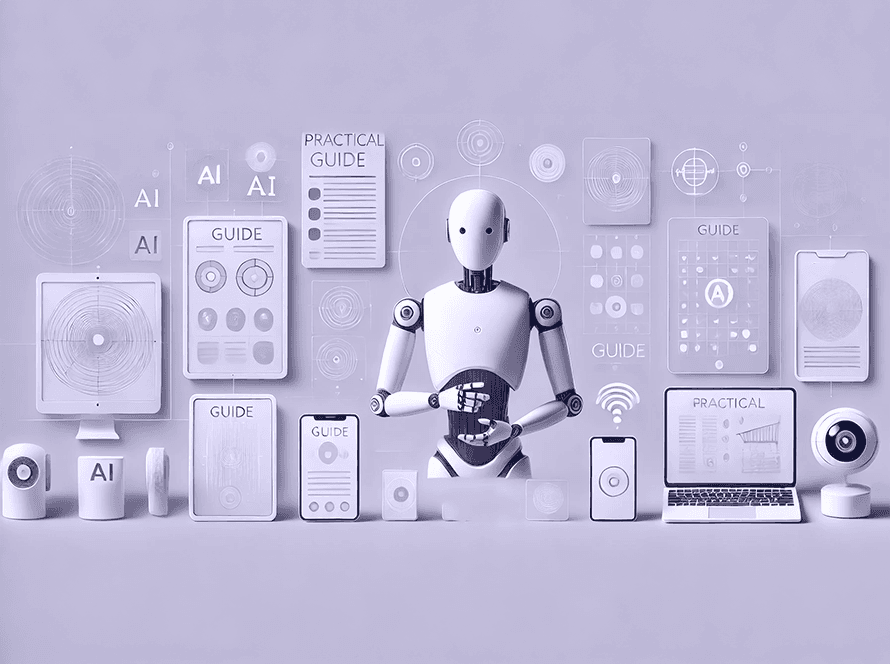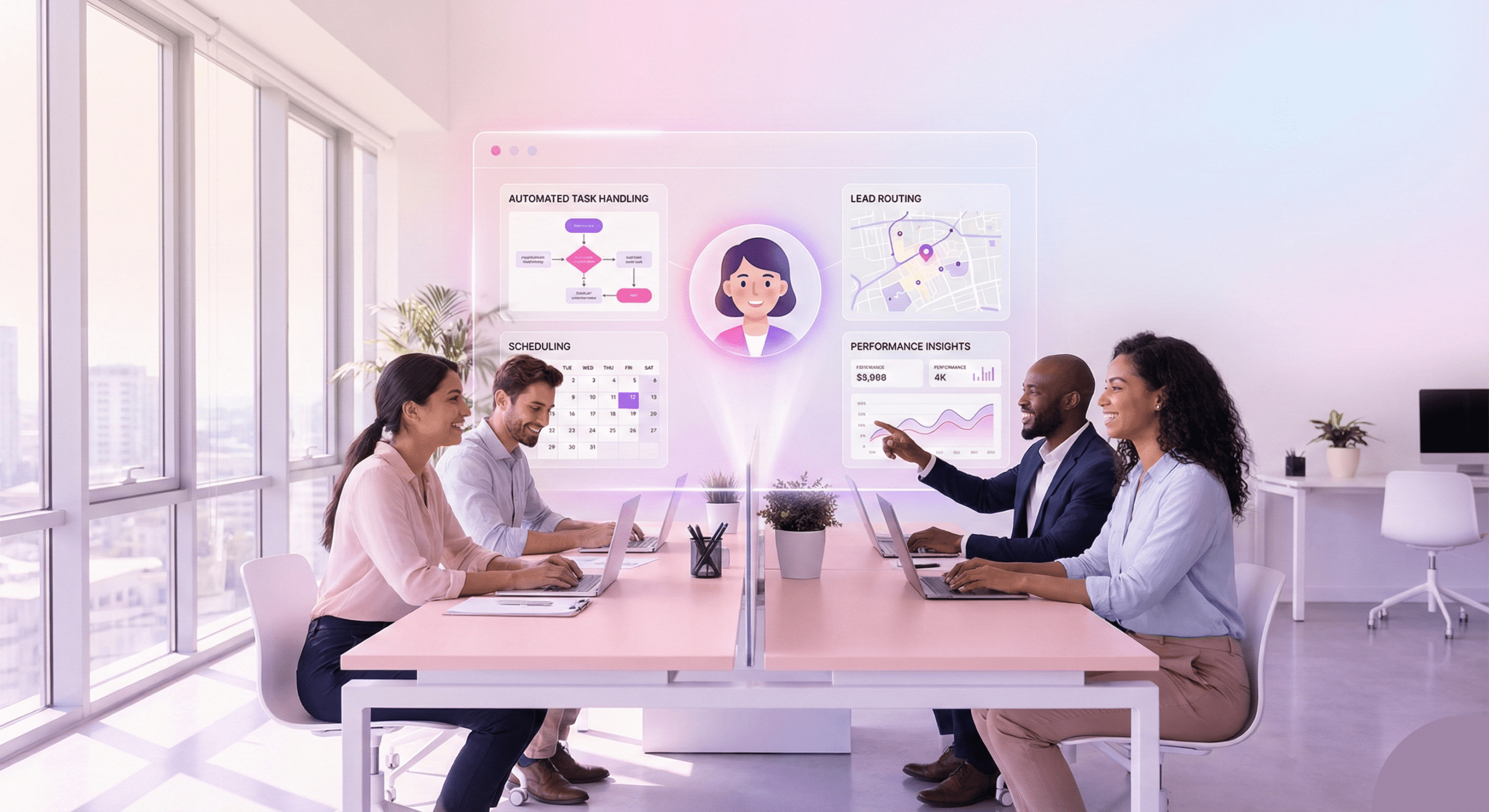“Slash your no-show rates and boost sales by implementing automated voice reminders that cut through the noise, build rapport, and increase meeting attendance.”
The calendar notification pops up. A big sales meeting is starting in five minutes. You join the video call and are ready to go. Five minutes pass. Then ten. You send a quick email, “Hey, just checking if you’re still able to make it?” Silence. It slowly dawns on you: you’ve been stood up. The dreaded no-show has struck again.
If you’re in sales, this scenario is painfully familiar. You invest hours researching a prospect, crafting the perfect outreach, and finally booking that crucial meeting, only for them to vanish. It’s more than just a minor inconvenience; it’s a significant drain on resources, morale, and your bottom line. Every missed meeting is a lost opportunity, a disruption to your workflow, and a step backward in your sales cycle.
The problem is pervasive. Industry reports suggest that no-show rates for initial sales meetings can be as high as 40%. Think about that. Nearly half of the appointments carefully set by your team could evaporate into thin air. This isn’t just a sales problem; it’s a business crisis hiding in plain sight. It leads to wasted payroll hours, inaccurate forecasting, and a sales team spending more time rescheduling than selling.
So, what’s the solution? How do you combat the persistent plague of no-shows? While text messages and email reminders have their place, they are increasingly easy to ignore in our flooded digital landscape. The answer lies in a more direct, personal, and technologically advanced approach: Automated Voice Reminders.
This article dives deep into the world of automated voice reminders and how they can drastically slash your no-show rates. We’ll explore the real costs of missed meetings and the psychology behind why prospects don’t show up, as well as provide practical, actionable strategies for implementing a voice reminder system that works. Furthermore, we will show you how integrating this technology into a comprehensive AI-powered sales platform can transform your entire sales process, saving you time, boosting engagement, and ultimately, helping you close more deals. Let’s get started.
The Crippling Cost of a No-Show
Before we explore the solution, it’s essential to grasp the full scope of the problem. A no-show isn’t just a blank 30-minute slot on your calendar. It’s a multi-layered issue with cascading adverse effects that ripple through your entire sales operation. Understanding these costs illuminates why appointment no-show reduction should be a top priority for any sales-driven organization.
The Obvious Cost: Lost Revenue and Wasted Time
This is the most direct and easily calculated impact. Let’s break it down with a simple example. Imagine your average deal size is $5,000, and your sales team closes 20% of the initial meetings they hold. Each meeting is worth $1,000 in revenue ($5,000 * 0.20).
Let’s say a single sales representative has five meetings scheduled for the day, but two are no-shows (a 40% no-show rate). That’s $2,000 in potential revenue that just vanished. Multiply that across a team of ten reps over an entire year, and the numbers become staggering. You’re looking at millions of dollars in lost opportunities.
Beyond the potential revenue, consider the sunk costs. Your sales rep spent time researching the prospect, preparing their pitch, and personalizing the presentation. Let’s say that’s two hours of prep work per meeting. For those two no-shows, the company just paid for four hours of work that yielded zero results. That’s time that could have been spent prospecting new leads, nurturing existing ones, or closing other deals. The time of a skilled sales professional is one of your most valuable assets, and no-shows squander it completely.
The Hidden Costs: Operational Chaos and Damaged Morale
The financial numbers are stark, but the hidden costs can be just as damaging.
- Operational Disruption: No-shows throw a wrench into the finely tuned gears of your sales machine. A rep who blocked out an hour for a demo is now idle. This creates dead time in their day, disrupting their flow and productivity. It also complicates scheduling. The rep has to chase the prospect to reschedule, adding another task to their full plate and extending the sales cycle.
- Inaccurate Forecasting: Sales leaders rely on the number of scheduled meetings to forecast future revenue. Those forecasts become wildly inaccurate when a significant percentage of those meetings don’t happen. This can lead to poor business decisions, missed targets, and pressure from leadership based on faulty data.
- Decreased Morale: A no-show can be incredibly disheartening for a sales rep. They’ve put in the effort and gotten excited about the opportunity, only to be met with silence. It can feel like a rejection, and when it happens repeatedly, it can lead to burnout, frustration, and a decline in motivation. A team bogged down by no-shows is a team that struggles to maintain momentum and a positive mindset, which are crucial for sales success.
- Loss of Sales Momentum: The journey from lead to customer is about building momentum. A no-show brings that momentum to a screeching halt. The prospect, who was once interested enough to book a meeting, goes cold. The longer the gap between the initial interest and the actual conversation, the higher the chance their priorities will shift, a competitor will swoop in, or their initial pain point will seem less urgent.
When you add it all up, the actual cost of a no-show is far greater than an empty calendar slot. It’s a systemic issue that erodes revenue, wastes valuable time, disrupts operations, and demotivates your most important asset—your people. This is why finding a practical, scalable solution is not just a good idea; it’s an absolute necessity for survival and growth.
The Root of the Problem: Why Do Prospects Ghost You?
To effectively solve the no-show problem, we must first understand its causes. People don’t typically book meetings with the malicious intent of not showing up. Life and business simply get in the way. Can better tailor our reminder strategy to address these specific failure points. by diagnosing the common reasons for no-shows
1. They Simply Forgot
This is, by far, the most common reason. Think about your own schedule. It’s likely packed with meetings, deadlines, and urgent tasks. Your prospect is no different. They may have booked the meeting with the best intentions a week or two ago. But in the whirlwind of their daily responsibilities, with new fires to put out every hour, your appointment can easily slip through the cracks. A simple calendar notification is often insufficient to cut through the noise of a dozen other alerts they receive every hour. They aren’t being disrespectful; they’re just human and overwhelmed.
2. The Meeting Lacks Perceived Value
If a prospect doesn’t see the meeting as a high-priority event that will solve a burning problem, they are far more likely to let something else take precedence. This often stems from the initial discovery call or outreach. If the value proposition wasn’t clearly communicated or they don’t fully understand what’s in it, the meeting becomes another “sales call” they can afford to miss. They might think, “I’ll just catch the next one,” or “I can probably find this information online.” Your meeting is disposable without a strong sense of urgency and clear value.
3. A Genuine Scheduling Conflict Arose
Business is dynamic. An unexpected, high-priority issue can land on your prospect’s desk minutes before your scheduled call. Their boss might pull them into an emergency meeting, a critical client might have an urgent request, or a personal matter could arise. In these situations, your meeting, while important, gets bumped. The problem isn’t that they didn’t want to attend; they were forced to triage their commitments, and your meeting lost out. Often, they are so caught up in handling the new crisis that they don’t even have a moment to send a cancellation notice.
4. Poor Communication and Unclear Instructions
Sometimes, the barrier to attendance is purely logistical. Was the time zone confirmed correctly? Did the calendar invite actually go through and get accepted? Does the video conferencing link work or require a complicated download or login process? Any friction in joining the meeting increases the likelihood of a no-show. If a prospect clicks the link and it doesn’t work immediately, they might try once or twice before giving up and moving on to their next task.
5. Loss of Interest or “Buyer’s Remorse”
The time between booking a meeting and attending it is a vulnerable period. During this gap, the prospect might continue their research and find a competitor’s solution. They might talk to a colleague who had a bad experience with a similar product. Or their initial enthusiasm may fade as their focus shifts elsewhere. This “cold feet” phenomenon is common, especially if there’s a long delay between the initial contact and the scheduled meeting. Their commitment can easily wane without consistent engagement to keep their interest piqued.
Understanding these reasons reveals a crucial insight: most no-shows are not a result of malice, but a combination of human error, competing priorities, and communication gaps. This is fantastic news because these are all problems that a well-designed reminder system, particularly a voice reminder system, is uniquely equipped to solve.
The Power of the Human Voice: Why Voice Reminders Work
We live in a world of silent, text-based communication. We’re bombarded with hundreds of emails, text messages, and app notifications daily. Our brains have adapted by quickly filtering and ignoring most of them. This is why email and SMS reminders, while better than nothing, are losing their effectiveness. Their open rates are declining, and they often fail to create a real sense of urgency or personal connection.
This is where automated voice reminders change the game. A voice—even an automated one—cuts through the digital clutter in a way that text simply cannot. It leverages deep-seated psychological triggers that make it far more impactful.
It’s Personal and Attention-Grabbing
An incoming phone call is a fundamentally different type of interruption from a text message. A ringing phone demands immediate attention. It’s a synchronous event that pulls us into the present moment. We are conditioned to answer it or, at the very least, acknowledge it. An email can be archived without being read, but a phone call must be handled actively. This simple act of commanding attention is the first and most critical step in reminding someone of their commitment. A well-designed voice reminder system can deliver a personal message, addressing the prospect by name and referencing the specific meeting, creating a sense of a one-to-one interaction rather than a generic, automated blast.
It Conveys Tone and Urgency
Text is notoriously flat and devoid of emotion. Is “See you tomorrow” a friendly reminder or a demand? It’s hard to tell. Voice, on the other hand, is rich with tone, inflection, and warmth. A friendly, professional, and enthusiastic voice reminder can convey excitement about the upcoming meeting. It reinforces the value of the appointment and subtly communicates that a real person is looking forward to speaking with them. This emotional layer builds rapport and transforms the reminder from a cold, logistical notification into a warm, personal touchpoint, significantly strengthening the prospect’s feeling of obligation to attend.
It Builds a Stronger Connection
Hearing a voice, even a sophisticated AI voice, feels more human than reading text on a screen. It creates a stronger psychological connection and a sense of accountability. When a prospect hears a voice reminder, it subconsciously registers that a real person (or an ingenious system acting on their behalf) is expecting them. This makes it socially and psychologically more challenging to simply not show up without any explanation. They are more likely to feel a sense of responsibility to either attend or to proactively reach out to reschedule, which is a much better outcome than a no-show. This is a core component of effective customer engagement strategies.
It Forces a Decision
A great voice reminder system doesn’t just deliver a message; it prompts an action. By including options like “Press 1 to confirm your appointment” or “Press 2 if you need to reschedule,” you turn a passive reminder into an active engagement. This forces the prospect to acknowledge their commitment consciously. If they confirm, they are mentally recommitting to the appointment, dramatically increasing their likelihood of showing up. If they need to reschedule, you can find out immediately and work to get another time on the calendar, preventing the lead from going cold. You’re proactively managing the schedule instead of reactively chasing down a ghosted prospect.
In essence, while email and SMS reminders are like leaving a sticky note on a crowded bulletin board, a voice reminder is like a friendly tap on the shoulder. It’s more direct, personal, and difficult to ignore. This is why it is such a powerful tool in the fight for meeting attendance improvement.
Best Practices for Implementing Your Automated Voice Reminder Strategy
Simply turning on an automated voice reminder system isn’t enough. You need a thoughtful strategy to achieve the best results and see a dramatic reduction in no-shows. How you craft your message, wend it, and integrate it into your workflow are all critical components of success. Here are the essential best practices to follow.
1. Perfect Your Timing and Cadence
Timing is arguably the most crucial element. A reminder sent too early will be forgotten. One sent too late won’t give the prospect enough time to adjust their schedule if a conflict has arisen. The ideal cadence typically involves two key touchpoints:
- The 24-Hour Reminder: Send the first voice reminder approximately 24 hours before the meeting. This serves as the primary confirmation. It gives the prospect ample notice to block off the time, make necessary preparations, and resolve potential scheduling conflicts. This is the perfect time to ask them to confirm their attendance (e.g., “Press 1 to confirm”).
- The 1-Hour Reminder: Send a second, shorter reminder about 60 minutes before the meeting. This one acts as a final nudge. The prospect is likely at their desk, wrapping up a previous task. This reminder brings your meeting to the top of their mind, ensuring they have the link ready and are prepared to join on time. This message should be brief and direct: “Hi [Name], just a friendly reminder that our meeting starts in one hour. We’ve sent the video link to your email.
- Looking forward to speaking with you!”
This two-touchpoint strategy covers planning and execution, maximizing the chances that your meeting stays on their radar.
2. Craft the Perfect, Personable Script
The content of your message is just as important as its timing. A robotic, generic script can do more harm than good. Your goal is to sound professional, helpful, and human.
- Keep it Short and Sweet: Your reminder is not a sales pitch. Get straight to the point. The entire message should ideally be under 30 seconds.
- State the Essentials Clearly: Immediately identify who is calling and why. Then, clearly state the full date and time of the meeting (including the time zone). For example: “Hello, this is an automated reminder from [Your Company] for [Prospect’s Name]. We’re calling to confirm your appointment with [Sales Rep’s Name] for tomorrow, Tuesday, at 2:00 PM Eastern.”
- Personalize, Personalize, Personalize: Use the prospect’s name, the name of the sales rep they are meeting with, and if possible, the topic of the meeting (e.g., “your personalized demo of our platform”). This shows that the message is specifically for them, not a generic blast.
- Use a Warm and Professional Tone: Choose a friendly, clear, and professional voice (whether a recording of a real person or a high-quality AI voice). Avoid an overly cheerful or aggressive sales tone.
- Include a Clear Call-to-Action: As mentioned before, prompt them to act. The most effective CTA is a confirmation request: “Please press 1 to confirm that you will be there. If you need to reschedule, please press 2 to speak with our scheduling assistant, or call us back at [Phone Number].”
3. Integrate Seamlessly with Your CRM and Calendar
For automated voice reminders to be truly effective, they must be automated. Manually triggering calls for every appointment defeats the purpose and isn’t scalable. Your voice reminder system must integrate directly with your scheduling software and CRM.
This is a cornerstone of follow-up automation. A workflow should automatically trigger the scheduled voice reminders when a meeting is booked in your calendar (e.g., Calendly, HubSpot Meetings). If the prospect confirms via the keypad, that data should be logged in your CRM, so the sales rep can see who is confirmed for the day at a glance. If they request to reschedule, an alert should be triggered so the rep can follow up. This level of integration ensures that no appointment slips through the cracks and frees up your sales team to focus on selling, not administrative tasks.
4. Test, Measure, and Optimize
Don’t just “set it and forget it.” Your reminder strategy should be a living process that you continually improve.
- A/B Test Your Scripts: Try different versions of your message. Does a male voice work better than a female voice? Is a shorter message more effective?
- Experiment with Timing: Would a 48-hour reminder work better for your specific audience than a 24-hour one? What about a 30-minute reminder instead of a 60-minute one?
- Track Your No-Show Rate: This is your key metric. Monitor your no-show rate before and after implementing the system. Continue to track it as you make tweaks to your strategy. Your goal is to see a consistent downward trend in your appointment no-show reduction.
By following these best practices, you can build a powerful, efficient, and highly effective automated voice reminder system that ensures more prospects show up, enhances the customer experience, and positions your brand as professional and organized.
The Next Level: From Reminders to a Fully Automated AI Sales Agent
Automated voice reminders are a potent tool for solving the no-show problem. But they are just one piece of a much larger puzzle. The same technology and automation principles can be applied to the entire sales cycle, from initial contact to closing the deal. This is where the concept of an AI sales assistant or a complete AI-powered sales platform comes into play.
Imagine a system that doesn’t just remind prospects about meetings but can qualify them, schedule them first, conduct initial discovery calls, provide personalized product demos, handle follow-ups, and even answer customer support questions 24/7. This isn’t science fiction; it’s the reality of modern sales automation and the key to unlocking unprecedented levels of efficiency and growth.
While standalone automated scheduling tools are helpful, their true power is realized when they are part of an integrated ecosystem. A holistic platform can manage the customer journey, ensuring a seamless and professional experience at every touchpoint. This is about more than just meeting attendance improvement; it’s about fundamentally transforming how your sales team operates, allowing them to focus exclusively on high-value, strategic activities while the AI handles the repetitive, time-consuming tasks.
This is precisely why we built SalesCloser.ai. We recognized that solving the no-show problem was just the beginning. The real opportunity was creating an end-to-end AI sales agent to supercharge the entire sales process.
Introducing SalesCloser.ai: Your Ultimate Solution for Increasing Show-Up Rates and Sales
SalesCloser.ai is not just another voice reminder system. It is a comprehensive AI-powered sales platform designed to automate your entire sales funnel, dramatically increase sales conversions, and eliminate the administrative burdens that hold your team back. It incorporates all the best practices we’ve discussed and takes them several steps further.
Here’s how SalesCloser.ai provides a complete solution:
- Intelligent, Automated Scheduling: Before you can have a no-show, you need a “show” to be scheduled. SalesCloser.ai’s AI agent can engage leads in natural conversation via phone or web chat, understand their needs, check your team’s real-time availability, and book qualified meetings directly onto their calendars. This eliminates the tedious back-and-forth of manual scheduling.
- The Most Advanced Voice Reminders: Our platform includes a best-in-class automated voice reminder system. It’s fully customizable, deeply integrated with your calendar, and uses conversational AI that sounds remarkably human. It handles confirmations and rescheduling requests intelligently, ensuring your reps enter a day of confirmed, high-intent meetings.
- 24/7 AI-Powered Phone and Video Calls: This is where SalesCloser.ai truly stands apart. Our AI agent can handle inbound and outbound phone calls around the clock. It can qualify leads, answer frequently asked questions, and even conduct initial discovery calls, gathering crucial information before the prospect speaks to a human rep. This ensures every lead is engaged instantly, 24/7.
- Thoughtful, Automated Follow-Ups: The follow-up is where most deals are won or lost. Our follow-up automation ensures that no lead is left behind. The AI agent sends personalized emails and text messages and makes follow-up calls at the perfect cadence, keeping your brand top-of-mind and nurturing the prospect through the sales cycle.
- Personalized, On-Demand Product Demos: Address the “lack of value” problem head-on. SalesCloser.ai can deliver instant, AI-guided product demos tailored to a prospect’s interests. This provides immediate value and ensures they come to the meeting with your human rep, who is already educated and engaged.
- Seamless Customer Support: The AI agent can also handle tier-one customer support inquiries, freeing your human agents to focus on complex issues. This creates a better customer experience and a more efficient support operation.
By integrating all these capabilities into a single, intelligent platform, SalesCloser.ai does more than reduce no-shows. It creates a highly efficient, scalable, and effective sales machine. It empowers your human sales team by offloading the repetitive tasks, allowing them to operate at the top of their license and focus on what they do best: building relationships and closing deals.
The Bottom Line: Stop Tolerating No-Shows
The era of accepting no-shows as a “cost of doing business” is over. The technology to virtually eliminate them exists, and it’s more accessible and powerful than ever. By implementing a robust automated voice reminder strategy, you take a proactive step toward reclaiming lost revenue, maximizing your team’s productivity, and improving your entire sales process.
However, the true path to exponential growth lies in looking beyond single-point solutions. By embracing a comprehensive AI-powered sales platform like SalesCloser.ai, you can automate and optimize every step of the customer journey. You can ensure that every lead is engaged, every meeting is confirmed, and every sales rep is empowered to perform at their absolute best.
Stop letting empty calendar slots dictate your success. It’s time to take control.
Frequently Asked Questions (FAQs)
1. Will my prospects find automated voice reminders annoying?
This is a common concern, but the opposite is true when done correctly. Most people appreciate a helpful, professional reminder for their agreed-upon meeting. The key is to ensure the message is brief, polite, and provides value (e.g., an easy way to confirm or reschedule). A well-executed reminder is seen as a professional courtesy, not an annoyance.
2. How does a voice reminder compare to an SMS or email reminder?
While SMS and email reminders are better than nothing, they are increasingly easy to ignore in cluttered inboxes. A voice call commands more attention and creates a stronger personal connection and accountability. The best strategies often combine all three, but voice is uniquely powerful for cutting through the noise and getting a direct response.
3. Is a system like SalesCloser.ai complex to set up?
Not at all. Modern AI-powered sales platforms like SalesCloser.ai are designed for ease of use. They integrate directly with the CRM and calendar tools you already use (like HubSpot, Salesforce, and Google Calendar). Setup is typically quick, with dedicated support to ensure a smooth transition.
4. What kind of businesses benefit most from this technology?
Any business that relies on scheduled appointments or meetings to generate revenue will benefit significantly. This includes B2B SaaS companies, financial services, real estate, consulting firms, marketing agencies, and more. If no-shows cost your business money, then automated voice reminders and AI sales agents are for you.
5. Can I customize the voice and the message?
Absolutely. Customization is key to maintaining your brand identity. Platforms like SalesCloser.ai allow you to choose from high-quality AI voices or even record your own voice. All scripts are fully customizable to fit your specific needs and communication style.








